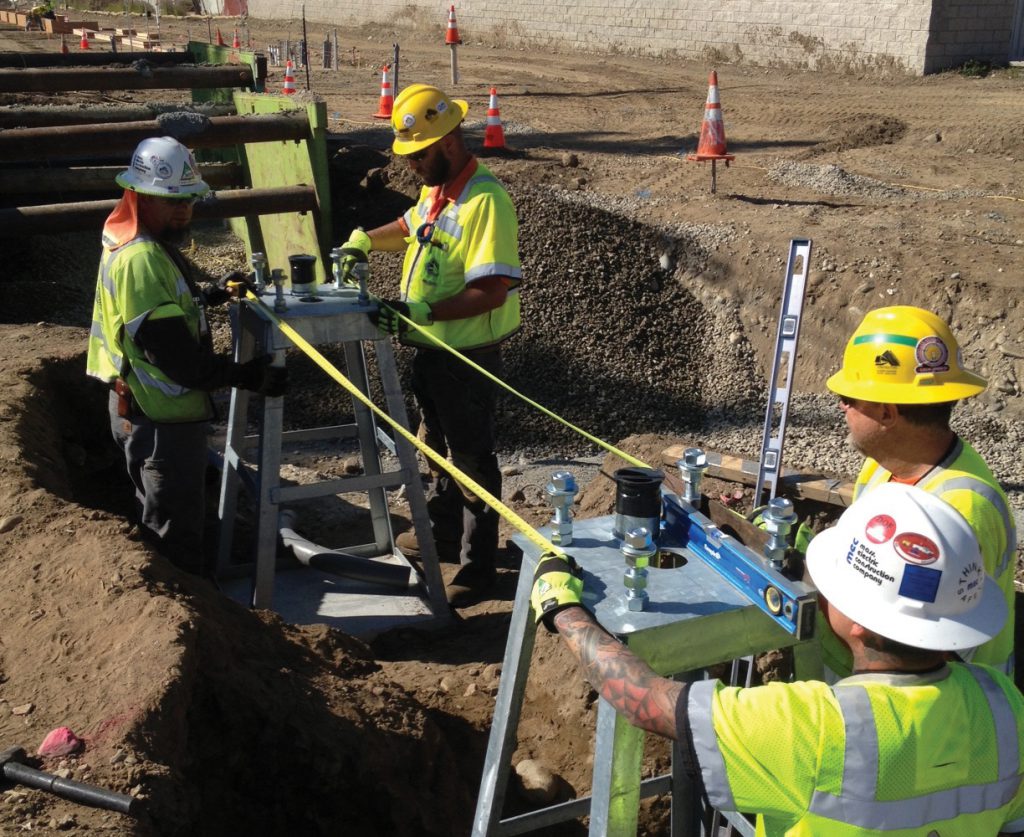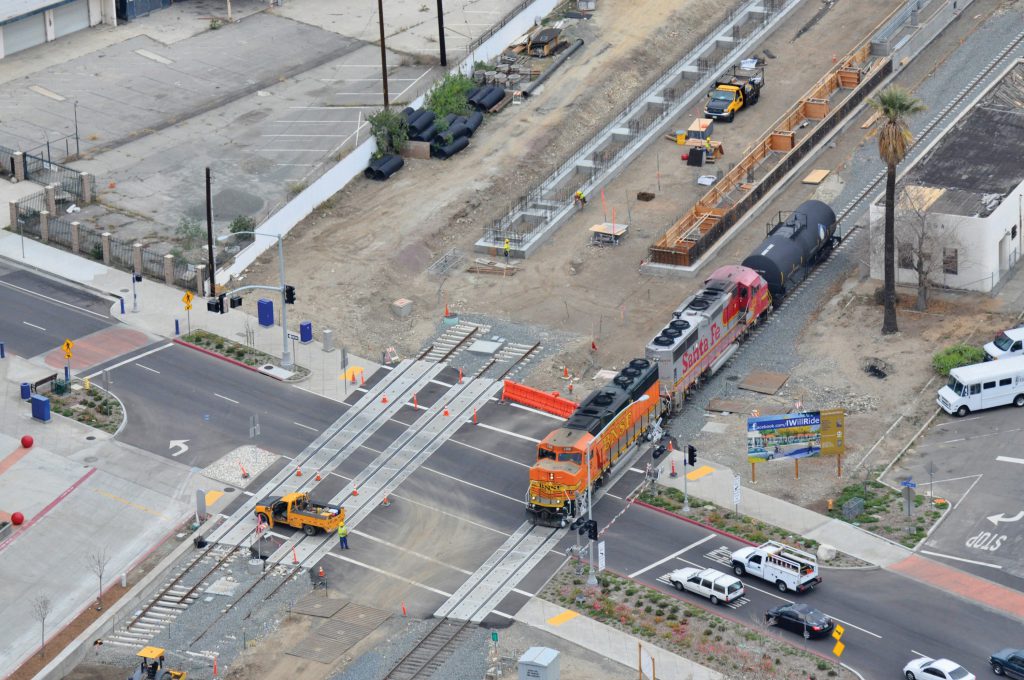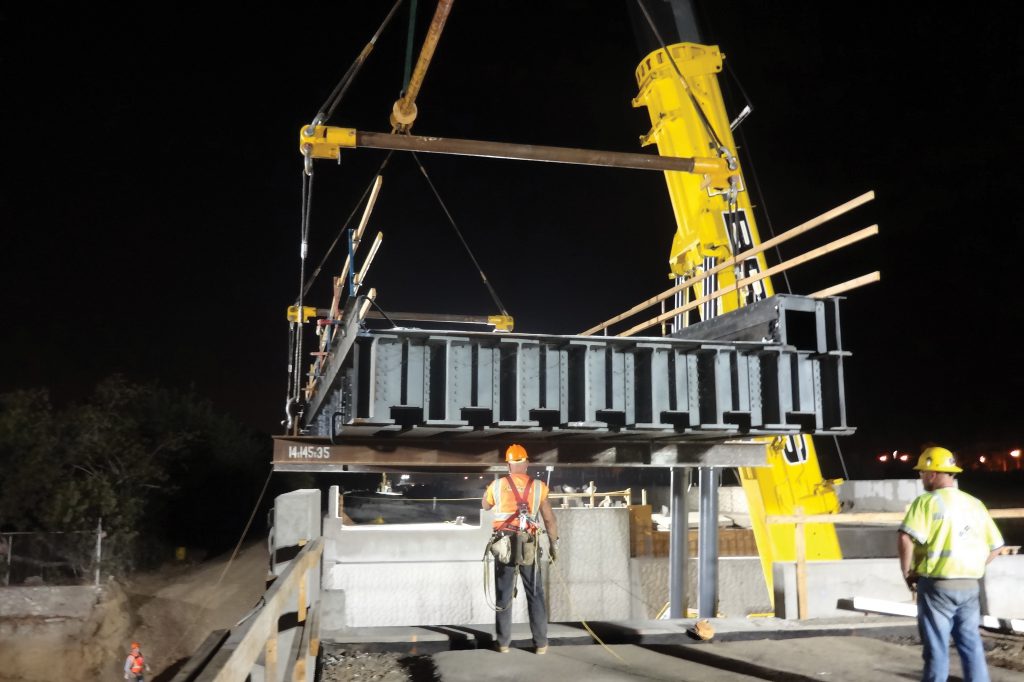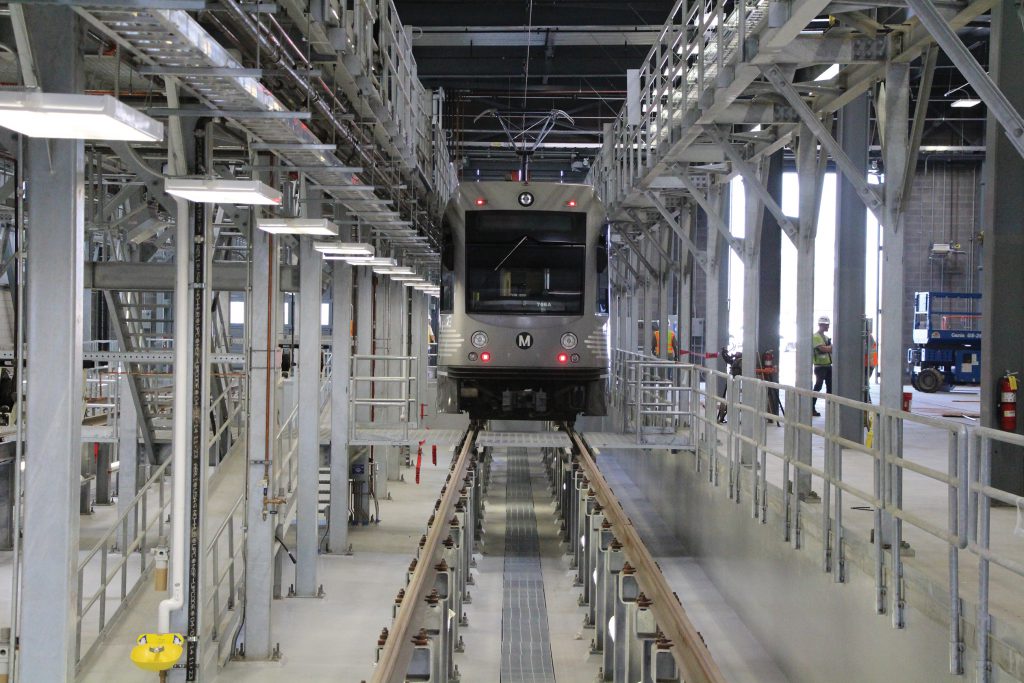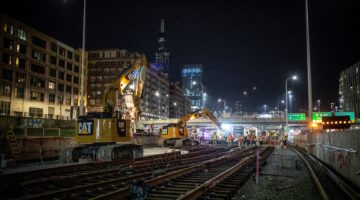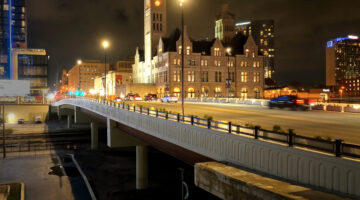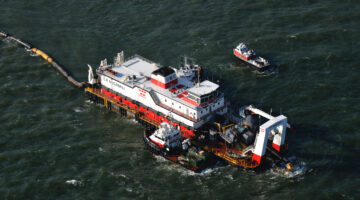More than 20 years ago, Kiewit completed two light-rail bridge projects in Southern California. The reconstruction of the 100-year-old Arroyo Seco Bridge and construction of the Los Angeles River Bridge — both completed by Kiewit in the ‘90’s — helped pave the way for light rail to ease the burden on the highly congested freeway system in Los Angeles. The bridges served as key connectors along an abandoned railroad that would eventually be transformed into a vibrant light-rail system — the Gold Line.
Fast forward to today. Residents and visitors log more than 1.2 million trips each month on the Foothill Gold Line from Los Angeles to Pasadena. The line’s highly anticipated 11.5-mile westward extension to Azusa, Calif., is nearing completion, rounding out the more than 30-mile light-rail system.
Before you put a shovel in the ground
When Foothill Transit Constructors, a joint venture between Kiewit and Parsons Corporation, was selected to design and build the Foothill Gold Line Extension from Pasadena to Azusa in 2010, it had a significant advantage. A reputation to get the work done right, on time and on budget. In fact, it was a reunion of sorts for the key team members who had worked on the first phase of the rail line years earlier.
Chris Burner, chief project officer with the Metro Gold Line Foothill Extension Construction Authority, says that his experience with the team on the previous work greatly streamlined the project, which reached substantial completion in September 2015.
“There were valuable lessons learned, specifically around the planning that can be done before you even put a shovel in the ground,” says Burner. “We’ve had a long, successful track record partnering with Kiewit. We’re able to work together and solve problems quickly. If you can do that, you can overcome a lot.”
One of the great lessons learned was the importance of pre-construction planning. While key permits had previously been obtained after construction began, the Authority secured permits for all 34 street-level grade crossings before the contract was awarded.
“The Authority did a really good job of being ready for our construction crews and securing all permits well in advance of our construction schedule,” said Steve McFadden, project manager. “Their proactive effort allowed us to build in an efficient, linear fashion.”
Construction site obstacles
While the long-term partnership was a benefit to the project, the team faced new challenges – most significantly, working within an active rail corridor. When picturing an active construction site, moving equipment, complex materials and workers donning yellow safety vests might come to mind. Now, imagine this scene along with a moving freight train in the background.
Crews had to take special precautions on approximately four miles of the track — the active rail corridor — which required special training and safety measures. A crew member was assigned to stay in constant contact with freight trains and dispatchers to notify workers when a train was approaching to keep everyone involved safe.
Relocating the track was another critical part of the project. Before most of the construction could even start, the team had to relocate the current freight track and signal systems roughly 20 feet to make room for the new light rail track. To achieve this, the track was shifted in a phased approach with constant coordination with the project team and active trains.
The three-day challenge
Another challenging feat for the team was the construction of the 700-foot San Gabriel River Bridge — the longest of the 24 bridges constructed or rehabilitated as part of the project.
The bridge was constructed adjacent to the bustling I-210 freeway within a river basin that was being used, in part, as a groundwater recharge basin. Stringent restrictions to the basin only allowed construction on the bridge when the river basin was dry and could be accessed by trucks, equipment and crews.
With limited staging space, the bridge’s 21,000-pound girders had to be delivered, set and secured within a 72-hour window when the basin was dry. If the deadline was missed, the team was at risk of delaying the completion date by a whole year.
Roughly one year of planning and coordination with more than a dozen agencies and organizations was needed to successfully orchestrate the girder installation. In the end, the girders were set without a hitch, thanks to the meticulous preparation of the project team.
“This was a huge milestone and our careful planning paid off,” said Wes Wegner, project controls manager at Kiewit. “It’s a prime example of our ambitious culture of always striving to improve and provide the best process and end product. We worked and re-worked our plans numerous times to ensure we had the right plan of attack in place.”
Once the girders were set, the remaining work continued aerially, with limited disruption to the river basin and nearby traffic.
Raising the bar on sustainability
Once operational, 65 rail cars will carry passengers on the Foothill Gold Line extension on a regular basis, offering nearby residents a new mode of transportation and shorter commutes. Cleaning, inspecting and maintaining these rail cars, along with the overall operations of the tracks and signals, requires a centrally located operations and maintenance facility. The Authority identified a 24-acre site in Monrovia, Calif., and set its sights on Leadership in Energy and Environmental Design (LEED) Gold certification — a first for this type of facility.
The Gold Line Operations Campus, with its 132,000-square-foot main building, is a full-service facility that will employ more than 200 people. With around-the-clock operations, rail cars can be inspected, serviced and maintained at the facility. The campus also has approximately six miles of track to store light rail vehicles when not in service or undergoing repairs.
The campus was designed to be 35 percent more water efficient and 35 percent more energy efficient than other similar facilities. To achieve this high level of performance, the team used recycled materials, LED lighting and adopted a construction waste mitigation program. The 9,000-square-foot car wash facility was designed to use reclaimed water, eliminating the demand for roughly 60,000 gallons of water daily. Special consideration was also taken in the landscape design with drought-tolerant plants.
“The Operations Campus provided us a unique challenge to reduce water and energy usage without significantly impacting the project schedule and budget,” said Foothill Gold Line Construction Authority CEO Habib F. Balian. “With the support and guidance of Kiewit-Parsons, this facility is now a model for others around the county and the nation.”
Smart thinking by the design team helped the Authority best leverage the budget for the building. The project team engaged key subcontractors early in the design process and encouraged heating, cooling and plumbing contractors to work alongside designers to ensure project plans translated into cost-effective, efficient installations. Overall, this helped reduce change orders later in the project.
“We bid subcontracting work with the requirement that contractors support us in a design-assist role,” said John Bley, project manager at Kiewit. “The contractors helped make sure the designs could be built on budget. When contractors have a better understanding of the design, you get a better result.”
Community involvement
Throughout the life of the project, the community played a vital role. The leadership of the five local cities connected by the rail line and hundreds of residents participated in planning meetings. Strong public involvement has solidified the light-rail system as a valuable community asset.
Public art installations at each of the six new stations are just one example of the strong connection between the project and community. Early in the design process, each of the five cities — Arcadia, Monrovia, Duarte, Irwindale and Azusa — was involved in choosing local artists to create design elements for the stations.
The completed stations provide memorable experiences for riders. From a 23-foot weather vane, to vibrant glass canopies, to mosaic-clad benches and stone sculptures, the artists’ work adds unique character to each of the stations and reflects the character and spirit of each city.
Art installations were also incorporated into the Gold Line Operations Campus through a glass tile mural and an ornate mesh fence that showcases California’s state flower, the California poppy.
Community support is crucial for future transit-oriented development. It is estimated that these cities could benefit from a possible $3 billion in local investment. This is good news for the San Gabriel Valley, which is expected to see a more than 60 percent increase in population by 2035.
“The Gold Line extension travels through areas that are conducive to future development, offering another benefit to the communities served by the line,” commented Burner. “There is an increased demand for jobs, amenities and housing that is in close proximity to public transportation.”
The next phase
With the development of more than 30 miles of the Gold Line complete, the Authority will focus its next effort on extending the line an additional 12.3 miles eastward to Montclair, Calif. Ground-breaking could take place as early as 2017.
